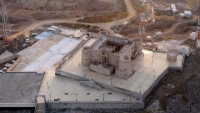
Dosariyah Region is one of the archaeological sites located south of the Arabian Gulf in al-Jubail Governorate in the Eastern Province , Kingdom of Saudi Arabia. Remains of igneous stones, pottery, bones, and shells found there prove the existence of ancient hamlets. It is currently covered with sand dunes and contains traces of civilizations that lived more than seven thousand years ago. Geographical location of Dosariyah Region Dosariyah Region is located forty-five km north of al-Qatif Gover...
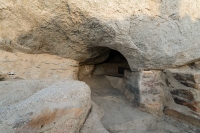
Makkah al-Mukarramah Province includes many archaeological sites, primarily the Islamic period antiquities that serve as historical evidence of the life of the Prophet Muhammad, peace be upon him (PBUH). These sites have given the region religious significance in addition to its economic importance, as it was a meeting point for trade caravans. Antiquities of the Prophetic Biography The antiquities of the Prophetic period include Jabal al-Nour , at the summit of which is the Cave of Hira where ...
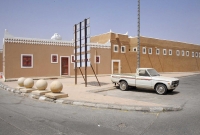
Al-Bassam Heritage House is a traditional house located in Unayzah Governorate in Qassim Province , in the central part of the Kingdom of Saudi Arabia. It reflects the development of ancient architecture in Najd and is considered one of the cultural heritage assets in the Kingdom. The house is located near the western gate of the old city of Unayzah, known as 'Bab al-Khala,' next to the traditional al-Musawkaf Market, and covers an area of approximately 3,500 m 2 . Construction of al-...
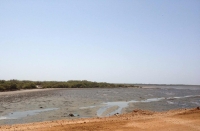
Birk al-Ghimad is a historical site in al-Birk Governorate in Aseer Province , southwestern Kingdom of Saudi Arabia. It gains its historical fame from being one of the Islamic sites mentioned in the story of the companions with the Prophet Muhammad, peace be upon him (PBUH), when al-Miqdad Bin al-Aswad said, 'If you lead us to Birk al-Ghimad, we will follow you.' It is also mentioned that when Abu Bakr (may Allah be pleased with him) intended to migrate from Makkah to Abyssinia, he pa...
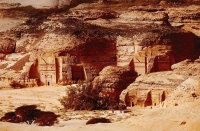
Al-Khuraybah Site is an archaeological site in AlUla Governorate in al-Madinah al-Munawwarah Province of the Kingdom of Saudi Arabia. It is distinguished by its dark red mountains, which have become an open-air museum due to the inscriptions and drawings found there, documenting the Lihyanite civilization that lived in the northwest of the Arabian Peninsula and ruled the region before the sixth century BCE. History of al-Khuraybah Site Al-Khuraybah forms part of the ruins of the ancient city of...
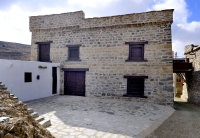
Bin Raqoush Palace is one of the archaeological and historical palaces in al-Bahah Province, Kingdom of Saudi Arabia. It is located in the village of Bani Saar, north of al-Bahah City , near the main road connecting al-Bahah City and al-Qara Governorate. It is considered one of the oldest fully serviced historical palaces and has been renovated to become a museum, a tourist center, and a venue for heritage events in the province. Elements of Bin Raqoush Palace Bin Raqoush Palace was built in 18...
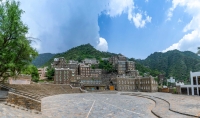
The Antiquities in Aseer Province are the collection of material remains and legacies of ancient human civilizations discovered in Aseer Province , southwest of the Kingdom of Saudi Arabia. The geological formation of Aseer Province Aseer Province forms part of the Arabian Shield, with rocks dating back to the Precambrian era. These are igneous and metamorphic rocks, such as granite, basalt, quartz, and schist, along with sedimentary rocks. The province also includes a portion of the Sarawat Mo...
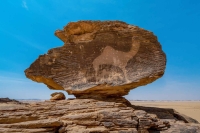
Hima Cultural Area in Najran was inscribed on the United Nations Educational, Scientific, and Cultural Organization 'UNESCO' World Heritage List in 2021, as it represents the lifestyle of a culture spanning nearly seven thousand years without interruptions. This is evidenced by a substantial collection of rock drawings and inscriptions depicting hunting, animals, and plants, as well as Hima Well, which has been providing fresh water for about three thousand years. Hima Cultural Area...
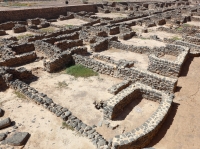
Zubayda Trail Stations in Hail are archaeological sites located in Hail Province , north of the Kingdom of Saudi Arabia. Zubayda Trail, also known as 'al-Kufi Hajj Route,' stretches from Kufa City in Iraq, passing through the northern and central Kingdom, reaching Makkah al-Mukarramah . Its length within Saudi territories exceeds 1,400 km, traversing five provinces: Northern Borders , Hail , Qassim , al-Madinah al-Munawwarah , and Makkah al-Mukarramah . The length of Zubaidah Trail wi...
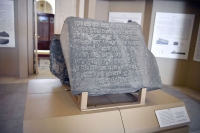
Al-Mu'alla Tombstone Inscriptions in Makkah al-Mukarramah are a collection of decorative texts and letters engraved on stones found in al-Mu'alla Cemetery in Makkah al-Mukarramah , located west of the Kingdom of Saudi Arabia. The collection includes 586 stones dating from the seventh to the fifteenth century. The Heritage and Antiquities Museum in Makkah al-Mukarramah preserves several of these stones, which serve as valuable sources for recording and preserving historical events and ...
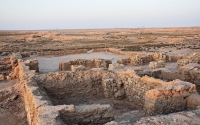
The Antiquities in Northern Borders Province are the material remnants and legacies of ancient human civilizations in Northern Borders Province in the Kingdom of Saudi Arabia. The antiquities of Northern Borders Province in prehistoric times Field research teams documented the presence of antiquities dating back to prehistoric times, which are the ancient periods when writing did not exist, and humans relied on stone tools for their livelihood. These antiquities are found in several places in N...
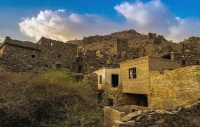
Antiquities in al-Bahah Province are the tangible remains and legacies of ancient human civilizations in al-Bahah Province , southwest of the Kingdom of Saudi Arabia. The province contains the ruins of old civilizations, some of which date back to the Paleolithic era, the Neolithic era, the pre-Islamic era, and the Islamic era. Prehistoric era antiquities The antiquities dating back to the Stone Ages in al-Bahah Province are distributed across three sites: - Bani Kabir Site, comprising granite ...